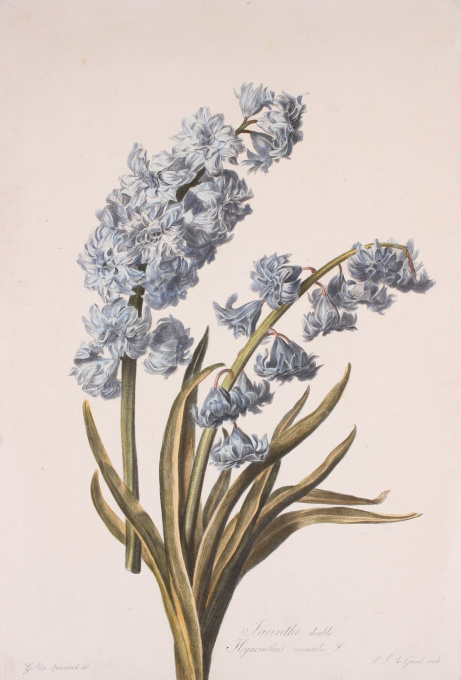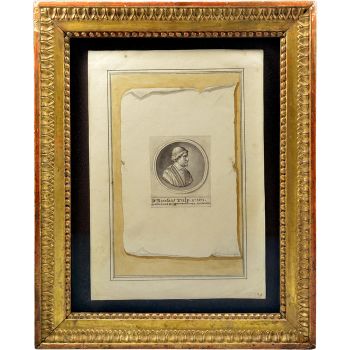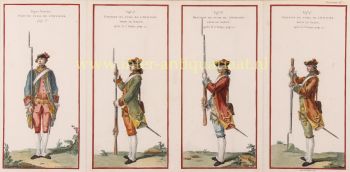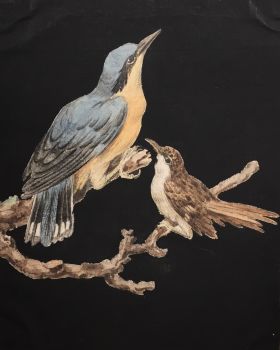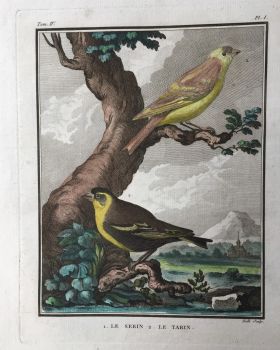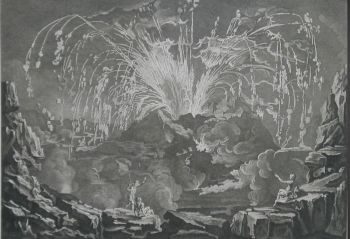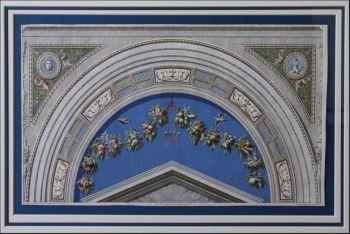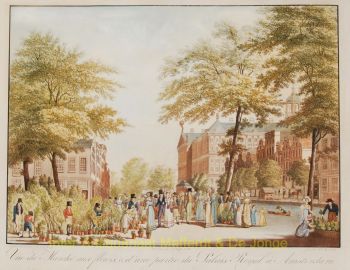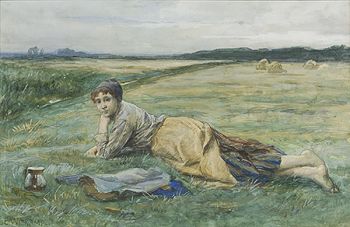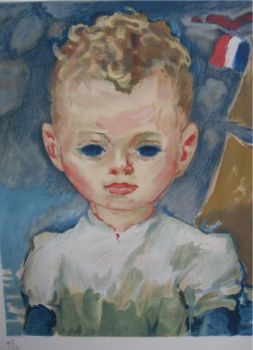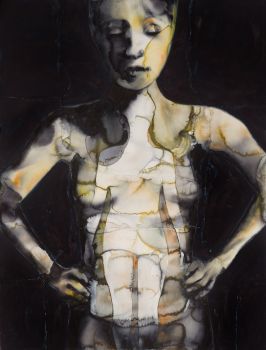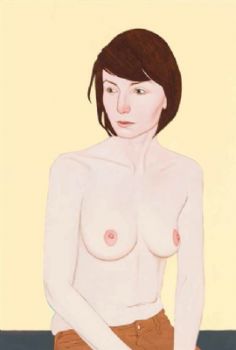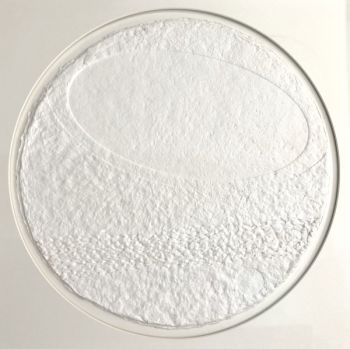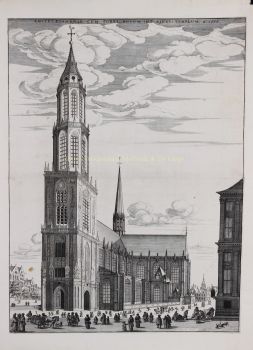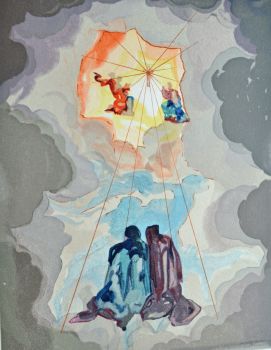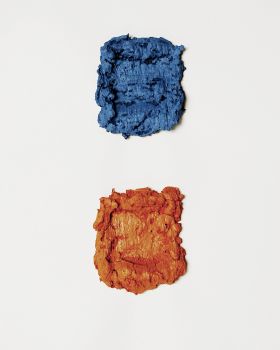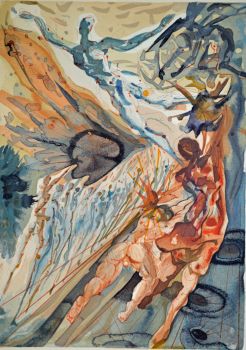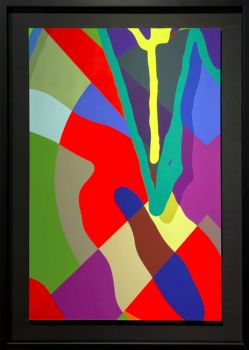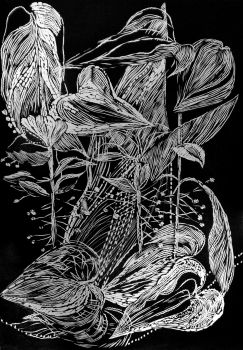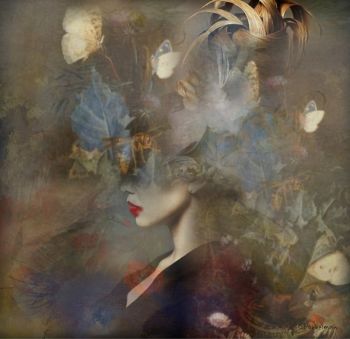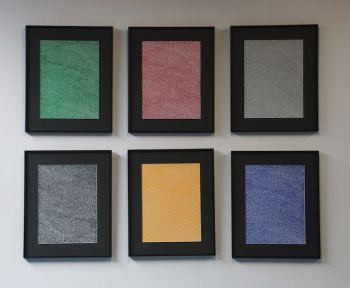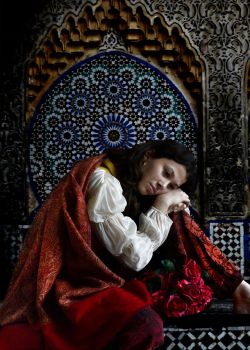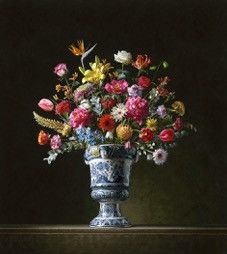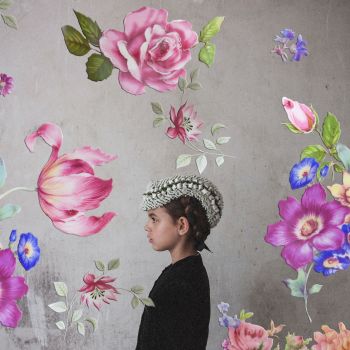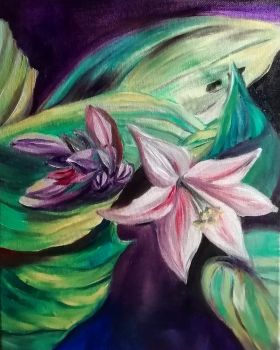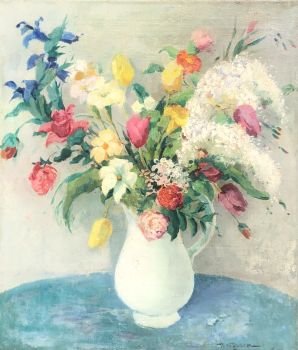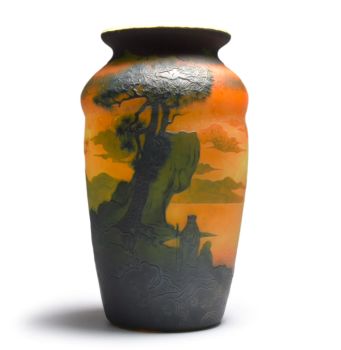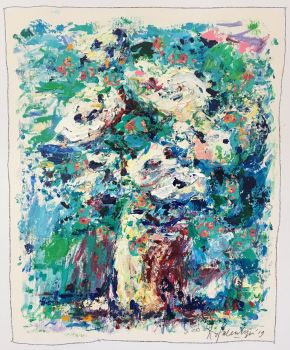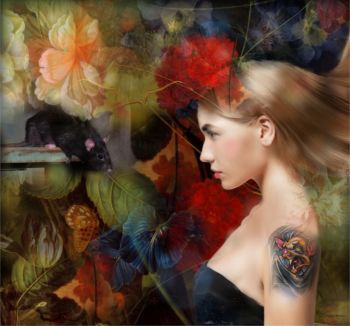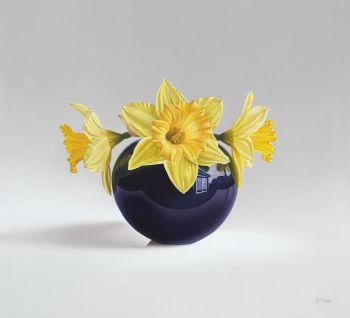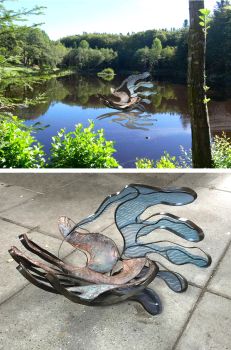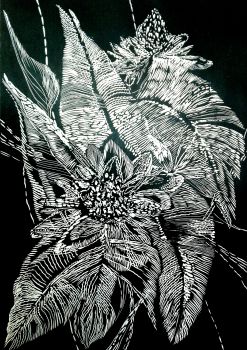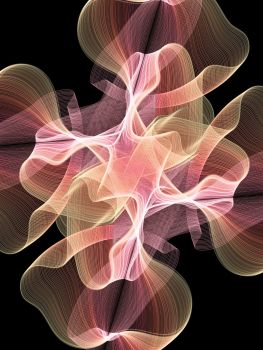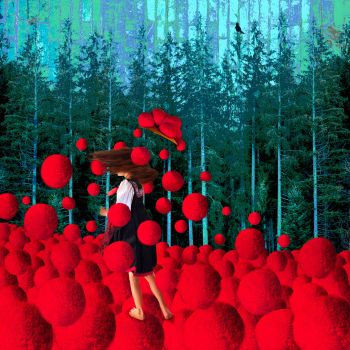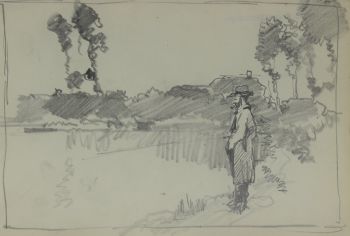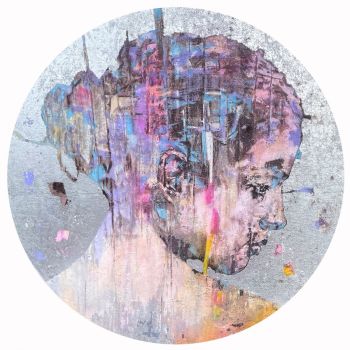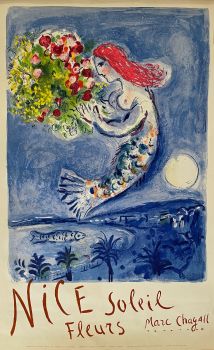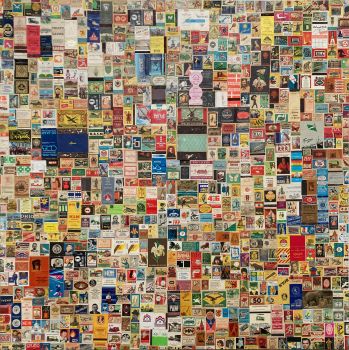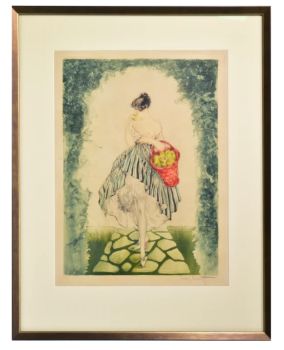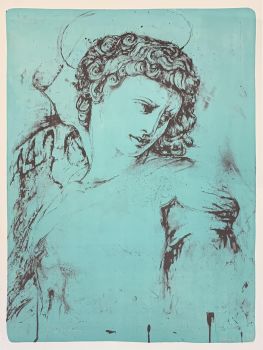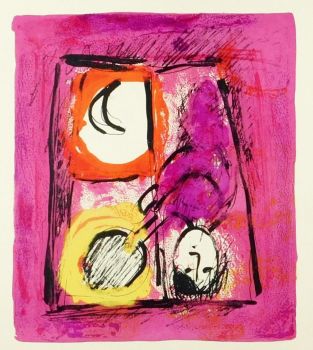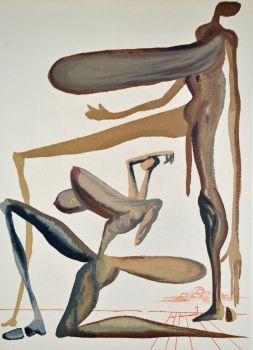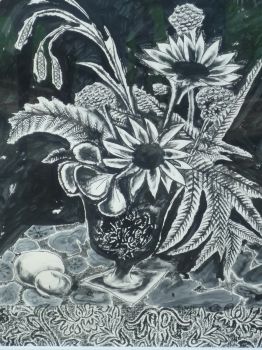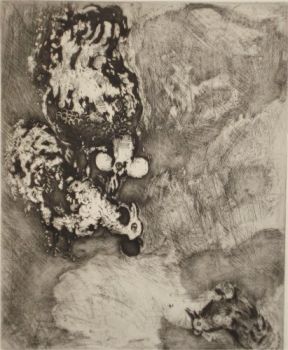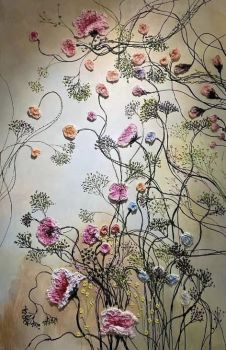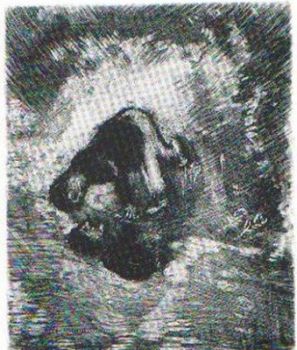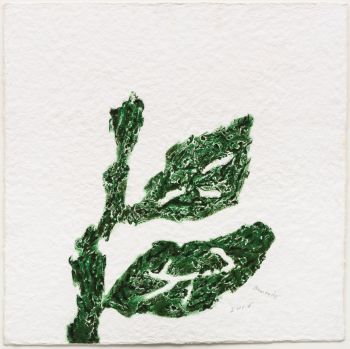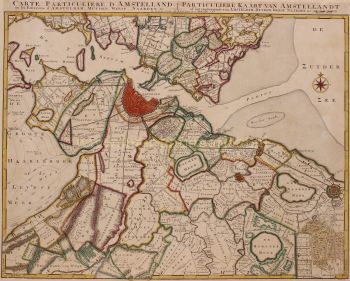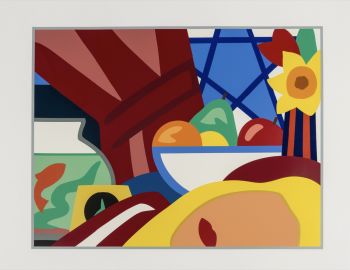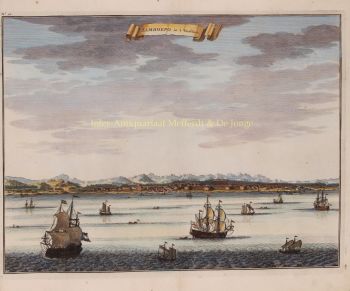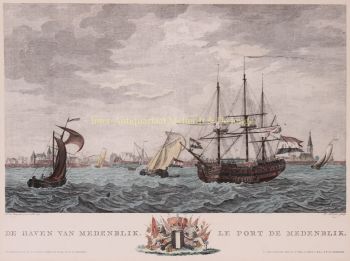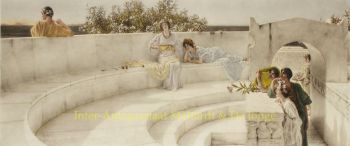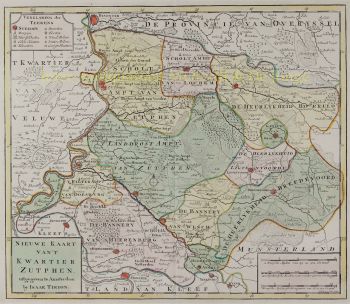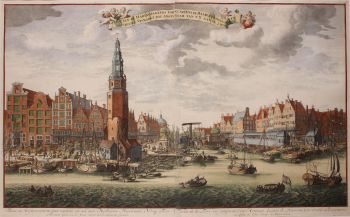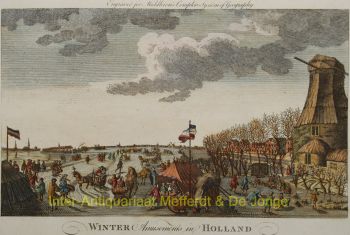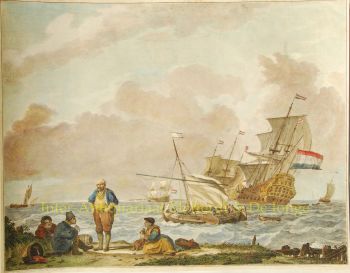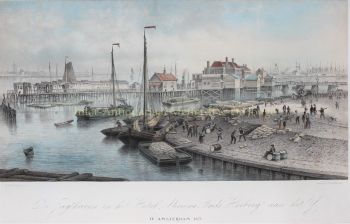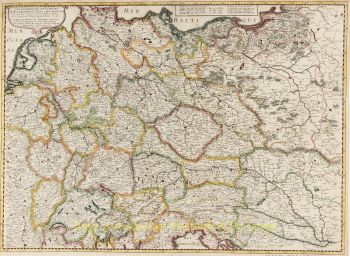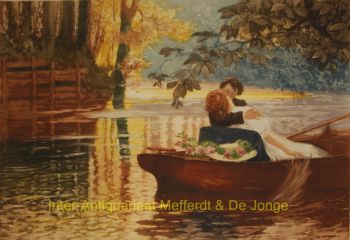Dutch hyacinth 1799 - 1801
Gerard van Spaendonck
Inter-Antiquariaat Mefferdt & De Jonge
- A proposito di opere d'arte“Jacinthe double - Hyacinthus orientalis”, stipple engraving made by P.F. le Grand after a drawing by Gerard(us) van Spaendonck from the "Fleurs dessinées d'après nature", published between 1799 and 1801. With original hand colouring. Size (print) approx. 50 x 33 cm. In Greek mythology, Hyacinth was a very beautiful Spartan prince and lover of the god Apollo. Hyacinth was also admired by the God of the West wind Zephyrus. But Hyacinth chose Apollo. With Apollo, Hyacinth visited all of Apollo's sacred lands in the chariot drawn by swans. Apollo taught his lover the use of the bow, of music and the lyre, the art of prophecy, and exercises in the gymnasium. One day, Apollo was teaching him the game of quoit. They decided to have a friendly competition by taking turns to throw the discus. Apollo threw first, with such a strength that the discus slit the clouds in the sky. Hyacinth ran behind it to catch it and impress Apollo, but as the discus hit the ground, it bounced back, hitting Hyacinth's head and wounding him fatally. Alternatively, Zephyrus is held responsible for the death of Hyacinth; jealous that Hyacinth preferred the radiant Apollo, Zephyrus blew Apollo's quoit boisterously off course to kill Hyacinth. Apollo's face turned pale as he held his dying lover in his arms. He used all his medicinal skills and even tried giving ambrosia to heal Hyacinth's wound, but in vain, for he could not cure the wound. When Hyacinth died, Apollo wept, blaming himself. He wished to become a mortal and join his lover in death. However, as that was not possible, Apollo promised that he would always remember Hyacinth in his songs and the music of his lyre. From Hyacinth's spilled blood, he created a flower, the hyacinth, and on its petals inscribed the words of despair, "AI AI" – "alas" Gerard van Spaendonck (1756-1842) studied with decorative painter Willem Jacob Herreyns in Antwerp. In 1769 he moved to Paris, where in 1774 he was appointed miniature painter in the court of Louis XVI. In 1780 he succeeded Madeleine Françoise Basseporte as professor of floral painting at the Jardin des Plantes, and was elected a member of the Académie des beaux-arts shortly afterwards. Van Spaendonck contributed to over fifty works of Les Vélins du Roi, a famous collection of botanical watercolours owned by French royalty. From 1799 to 1801 he published twenty-four plates as part of his Fleurs Dessinees d'apres Nature (Flowers Drawn from Life), which were high-quality engravings for students of floral painting. Today the Fleurs Dessinees d'apres Nature are considered among the best botanical engravings in the world. Stipple engravings with which one is able to differentiate between different tones of gray, turned out to be highly suitable for depicting botanical details, a method that Van Spaendonck also taught his pupil Pierre-Joseph Redouté. Like other famous flower painters, Van Spaendonck was also technically perfect: in oil, watercolour, pen or pencil, on any scale. With attention to every minute detail and elegance and sophistication of the composition, he shows his mastery. Like Jan van Huysum, Van Spaendonck understood the zeitgeist and created flower compositions that matched the taste of the public of around 1800. He combined the traditional Dutch way of representing flowers with French sophistication and good taste. Price: Euro 1.250,-
- A proposito di opere artista
Gerard era un fratello maggiore di Cornelis van Spaendonck (1756-1840), anch'egli noto pittore. Negli anni 1760-1769 studiò ad Anversa con il pittore decorativo Willem Herreyns. Nel 1769 si trasferì a Parigi, e nel 1774, tramite la mediazione di Claude-Henri Watelet, all'età di 28 anni, fu nominato miniaturista alla corte di Luigi XVI. Espone per la prima volta nel 1777. Nel 1780 succede a Françoise Basseporte (1701-1780) come professore di pittura floreale al Jardin des Plantes. Poco dopo fu eletto membro dell'Académie des beaux-arts.
Van Spaendonck dipinse sia ad olio che ad acquerello. Ha realizzato più di cinquanta opere per i Vélins du Roi, una rinomata collezione di acquerelli botanici di proprietà della famiglia reale francese. Dal 1799 al 1801 pubblicò 24 tavole dei suoi Fleurs Dessinées d'après Nature (Fiori disegnati dal vero); incisioni di alta qualità per studenti di pittura floreale. Oggi Fleurs dessinées d'après nature è un libro molto apprezzato nel campo della pittura floreale.
Nel 1788 Van Spaendonck fu nominato consigliere dell'Académie e nel 1795 fu uno dei fondatori dell'Institut de France. Nel 1804 fu insignito della Legion d'Onore. Poco dopo fu nobilitato da Napoleone Bonaparte. Van Spaendonck morì nel 1822 all'età di 76 anni.
In Groeseindstraat 99 a Tilburg, si può vedere una targa dove un tempo si trovava il luogo di nascita dei fratelli Van Spaendonck. Oltre al pittore Karel Appel, Gerard van Spaendonck è l'unico olandese ad essere sepolto al Père Lachaise di Parigi. Gerard è proprio dietro la tomba di Chopin.
Sei interessato ad acquistare questa opera d'arte?
Artwork details
Related artworks
- 1 - 1 / 1
Rene Rietmeyer
"Portrait of Rauschenberg, January 2002"2002
Prezzo su richiestaEuropean Cultural Centre Collection
1 - 4 / 24William Rosewood
She Loves Me, She Loves Me Not2019 - 2020
Prezzo su richiestaGalerie Mia Joosten Amsterdam
Frères Daum
Daum Nancy – “Paysage Soleil Couchant” vase with two applied handles1900 - 1910
Prezzo su richiestaAntiques Emporium
Roman & Henriëtte Reisinger
Bloemstilleven met Satervaas2022
Prezzo su richiestaAtelier/ Galerie H&R Reisinger
1 - 4 / 24Artista Sconosciuto
A large wall map of Asia by Nicolas de Fer 1647 - 1720
Prezzo su richiestaZebregs & Röell - Fine Art - Antiques
1 - 4 / 24- 1 - 4 / 12

